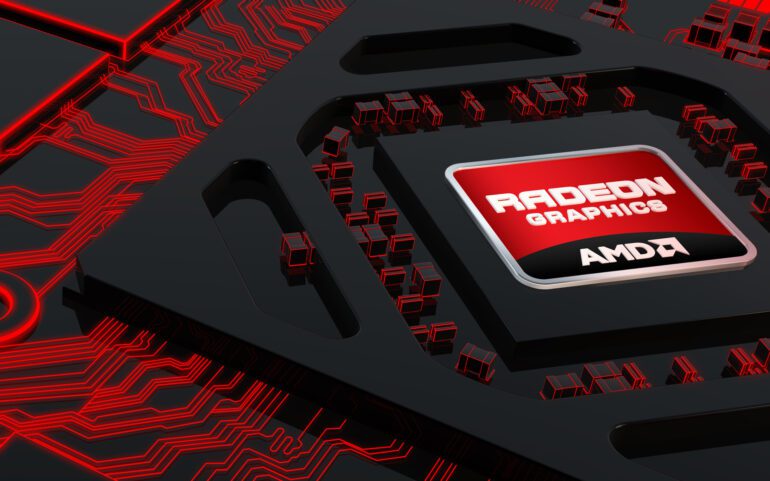TL;DR:
- AMD’s Q1 revenue forecast of $5.4 billion falls short of analyst expectations.
- Concerns arise about AMD’s core markets, including PCs, servers, game consoles, and programmable processors.
- Despite launching AI accelerators like the MI300, AMD’s expansion in the AI chip market faces uncertainties.
- Wall Street remains divided on the potential of AMD’s MI300 processors to compete with Nvidia.
- Intel also grapples with weakening demand in the programmable processor and data center processor markets.
- AMD’s financial health remains relatively stable, with a 52% gross margin projected for Q1.
- Fourth-quarter earnings align with estimates, but revenue slightly exceeds projections.
- AMD’s PC chip division and gaming computer-related revenue outperform expectations.
- The company faces competition from Nvidia in the PC add-in card chip market.
- AMD remains a key rival to Intel in computer processors.
Main AI News:
Advanced Micro Devices Inc. (AMD) faces a challenging road ahead despite the promise of new artificial intelligence processors. The company’s recent weak revenue forecast for the first quarter has raised concerns in the business world, casting a shadow over its prospects in the AI chip market.
In a statement released on Tuesday, AMD projected its first-quarter revenue to reach approximately $5.4 billion, falling significantly short of the $5.77 billion estimated by analysts. This disappointing outlook mirrored Intel Corp.’s pessimistic view of the PC and data center chip markets. In response to the announcement, AMD’s stock plummeted by over 6% in extended trading.
The underwhelming forecast has reignited worries about AMD’s core markets, including PCs, servers, game consoles, and programmable processors. Although AMD is making strides in the AI accelerator sector, where Nvidia Corp. holds a dominant position, it remains in the early stages of expansion.
Last month, AMD unveiled the MI300 line of AI accelerators, which are in high demand for developing AI models through data-intensive processing. AMD revised its sales forecast for the MI300 in 2024 to over $3.5 billion, up from the earlier estimate of $2 billion. However, some on Wall Street had anticipated figures as high as $8 billion, according to Chris Caso, an analyst at Wolfe Research.
AMD’s stock had been a favorite choice for investors seeking exposure to the AI computing market, ranking as the second-best performing stock on the Philadelphia Stock Exchange Semiconductor Index in recent years.
The pivotal question now is whether AMD’s MI300 processors can challenge Nvidia and its H100’s dominance. Nvidia’s revenue doubled in the latest fiscal year, according to estimates. Meanwhile, Intel, another competitor in programmable processors alongside AMD, has been grappling with lukewarm demand.
In its quarterly report last week, Intel acknowledged weakening demand in the data center processor market, aligning with AMD’s earlier warning about sluggish sales in game consoles and embedded processors.
AMD also provided insights into its financial health, with a gross margin of approximately 52% expected in the first quarter, consistent with previous projections. The company reported fourth-quarter earnings of 77 cents per share, excluding certain items, in line with estimates. Revenue for the quarter reached $6.17 billion, slightly surpassing the average projection of $6.13 billion.
Notably, AMD’s PC chip division generated $1.46 billion in revenue, falling short of the estimated $1.51 billion. Data center sales amounted to $2.28 billion, just shy of the projected $2.3 billion. Gaming computer-related revenue reached $1.37 billion, surpassing analysts’ expectations of $1.25 billion.
As the second-largest producer of chips for add-in graphics cards and a supplier to Sony Group Corp. and Microsoft Corp. for their consoles, AMD holds a notable position in the market. However, Nvidia maintains its leadership in the market for PC add-in card chips. Additionally, AMD remains Intel’s primary rival in the computer processor sector, encompassing laptops, desktops, and server machines.
Conclusion:
AMD’s weak revenue forecast and challenges in core markets underscore the competitive nature of the AI chip industry. While the company has made strides in AI accelerators, it must contend with formidable rivals like Nvidia and Intel. The market for AI processors remains dynamic, and AMD’s ability to secure a strong foothold hinges on its ability to navigate these challenges effectively.

